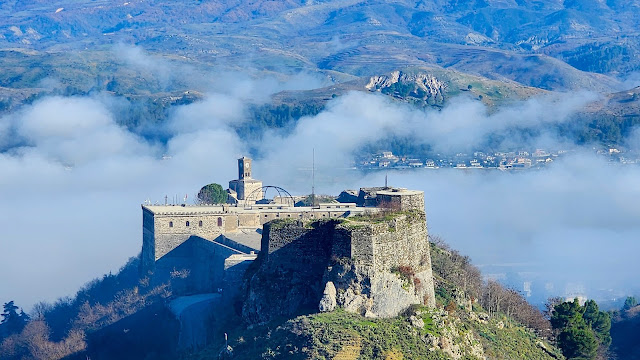Drinos Valley monasteries selected for World Monuments Watch 2025

The historic monasteries of Albania’s Drinos Valley have been named among the 25 cultural heritage sites included in the prestigious World Monuments Watch 2025. The announcement highlights the global significance of these ancient landmarks and the need to address challenges in preserving them.
The U.S. Embassy in Tirana congratulated Albania on the recognition and underlined its support for preserving the monasteries through the Ambassadors Fund for Cultural Heritage. “This acknowledgment underscores the global importance of Albania’s cultural heritage,” the embassy stated in a social media post. The Fund provides resources to protect and revive these important monuments, ensuring they remain a legacy for future generations and continue to benefit local communities.
Why is this important: The inclusion of the Drinos Valley monasteries in the World Monuments Watch highlights Albania’s rich cultural heritage and the need to protect it. By shining a spotlight on these historic sites, this recognition draws international attention to Albania’s preservation efforts while promoting sustainable tourism and economic development in the region.
Context: The Drinos Valley, spanning 400 square kilometers in southern Albania, is an archaeological and historical treasure. Known for its ancient settlements, fortifications, and religious landmarks, the valley offers an unparalleled glimpse into Albania’s past. Archaeological discoveries in the valley date from the Paleolithic era through Byzantine and medieval times, showcasing the development of civilizations over millennia.
Renowned for its strategic importance in antiquity, the valley boasts several ancient cities, including Antigonea and Hadrianopolis, as well as numerous fortified settlements and roads constructed by the Romans. The monasteries, such as those in Melani, Cepo, and Dhuvjan, are notable examples of Albania’s religious and cultural history, many of which date back over a thousand years.
Gjirokastra, the major city in the Drinos Valley, is already recognized as a UNESCO World Heritage Site. Known as the “City of Stone,” it is a major tourist hotspot, attracting visitors with its well-preserved Ottoman-era architecture and rich cultural heritage.
Ongoing excavations in the region continue to uncover previously unknown sites. International archaeological teams, have documented around 200 sites, including burial mounds and fortifications. The valley remains a dynamic field of study for historians and archaeologists alike.
Looking ahead: The recognition of the Drinos Valley monasteries as a cultural heritage priority opens new opportunities for Albania. The growing international attention will likely boost tourism, funding, and scholarly research. Thus, the Drinos Valley is not just a window into Albania’s past but also a vital link to its future as a cultural and historical destination.


